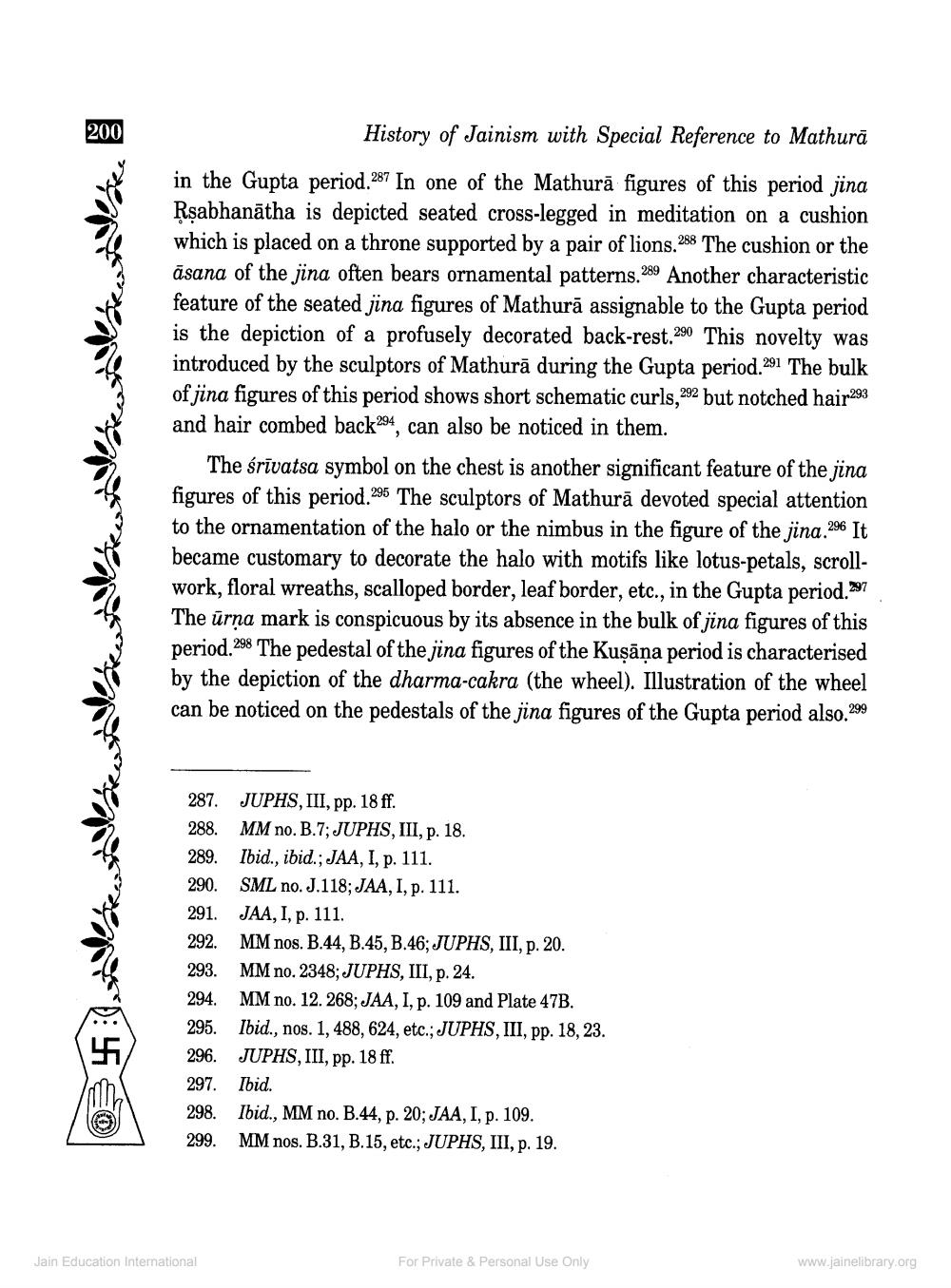________________
2001
History of Jainism with Special Reference to Mathurā in the Gupta period. 287 In one of the Mathurā figures of this period jina Rşabhanātha is depicted seated cross-legged in meditation on a cushion which is placed on a throne supported by a pair of lions.288 The cushion or the āsana of the jina often bears ornamental patterns.289 Another characteristic feature of the seated jina figures of Mathurā assignable to the Gupta period is the depiction of a profusely decorated back-rest.290 This novelty was introduced by the sculptors of Mathurā during the Gupta period. 291 The bulk of jina figures of this period shows short schematic curls,292 but notched hair293 and hair combed back294, can also be noticed in them.
The śrīvatsa symbol on the chest is another significant feature of the jina figures of this period. 295 The sculptors of Mathurā devoted special attention to the ornamentation of the halo or the nimbus in the figure of the jina.296 It became customary to decorate the halo with motifs like lotus-petals, scrollwork, floral wreaths, scalloped border, leaf border, etc., in the Gupta period. 27 The urņa mark is conspicuous by its absence in the bulk of jina figures of this period. 298 The pedestal of the jina figures of the Kuşāņa period is characterised by the depiction of the dharma-cakra (the wheel). Illustration of the wheel can be noticed on the pedestals of the jina figures of the Gupta period also.299
287. JUPHS, III, pp. 18 ff. 288. MM no. B.7; JUPHS, III, p. 18. 289. Ibid., ibid.; JAA, I, p. 111. 290. SML no.J.118; JAA, I, p. 111. 291. JAA, I, p. 111. 292. MM nos. B.44, B.45, B.46; JUPHS, III, p. 20. 293. MM no. 2348; JUPHS, III, p. 24. 294. MM no. 12. 268; JAA, I, p. 109 and Plate 47B. 295. Ibid., nos. 1, 488,624, etc.; JUPHS, III, pp. 18, 23. 296. JUPHS, III, pp. 18 ff. 297. Ibid. 298. Ibid., MM no. B.44, p. 20; JAA, I, p. 109. 299. MM nos. B.31, B.15, etc.; JUPHS, III, p. 19.
Jain Education International
For Private & Personal Use Only
www.jainelibrary.org




